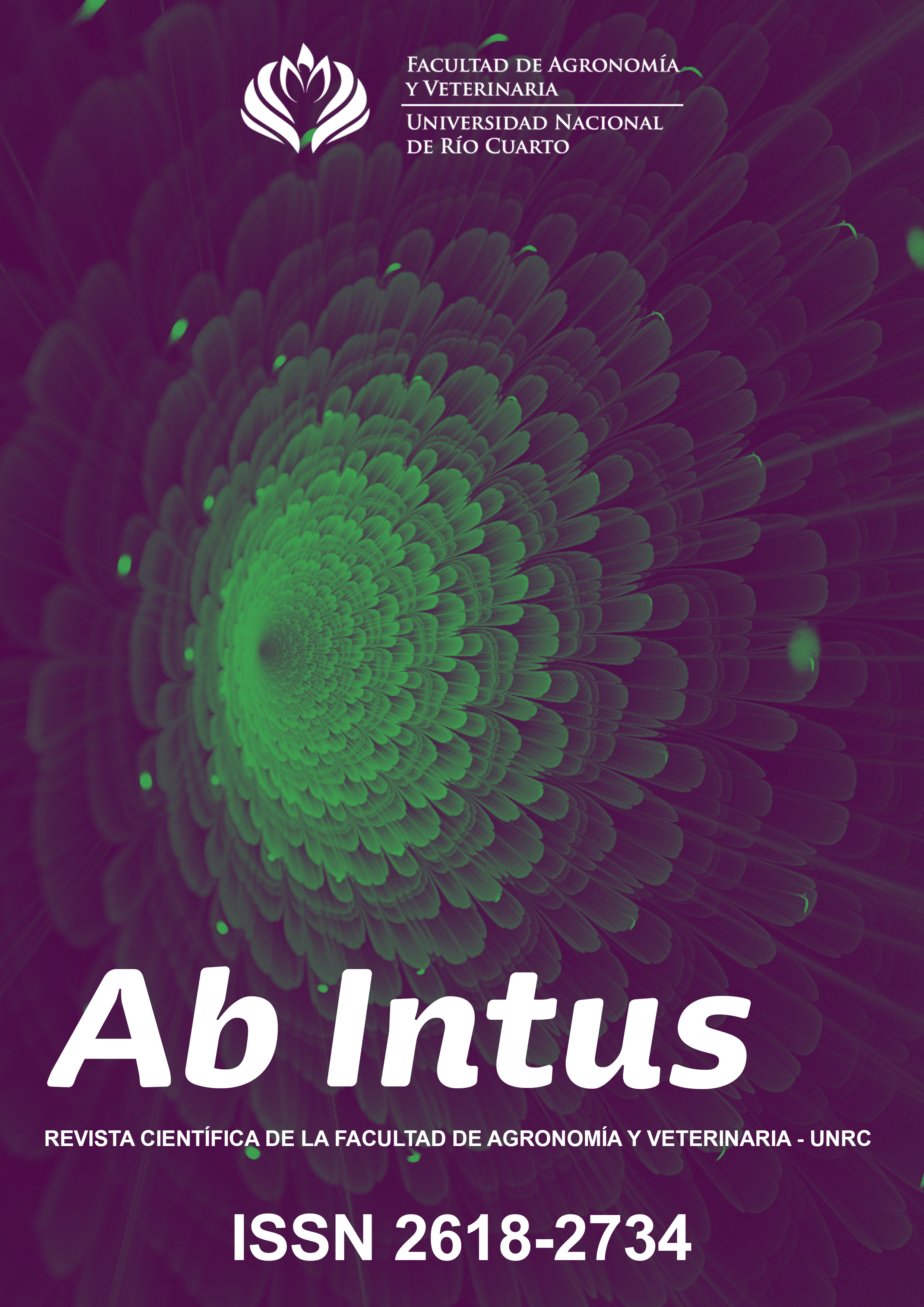Effect of new fungicides on peanut leaf spot and yield
Abstract
Diseases are the main sanitary problem for cultivation of peanut (Arachis hypogaea L.) crop. Among fungal diseases, leaf spot by Cercospora arachidicola Hori y Cercosporidium personatum (Berck. & Curt Deighton) is the most import - ant worldwide, and that which causes the highest production losses in our area. Management of this disease is carried out through chemical control. Thus, it be - comes relevant to assess the effectiveness of new fungicides registered for use in this crop. The aim of this research was to evaluate the effect of new fungicides on the incidence and severity of leaf spot and on peanut yield, under field conditions. The study was carried out during the 2015/16 and 2016/17 seasons in two peanut growing areas, General Cabrera and Vicuña Mackenna, located in the province of Córdoba, Argentina. A randomized complete block design with 4 replicates was used and the treatments were: T1) Pyraclostrobin (13,3%) + epoxiconazole (5%) (750 cc/ha); T2) Trifloxystrobin (18,75%) + prothioconazole (17,5%) (700 cc/ha); T3) Azoxystrobin (20%) + difenoconazole (12,5%) (500 cc/ha); T4) Difenoconazole (25%) (400 cc/ha); T5) Clorotalonil (72%) (1400 cc/ha); T6) Fluxapyroxad (5%) + epoxyconazole (5%) + pyraclostrobin (8,1%) (1200 cc/ha); T7) Penthiopyrad (10 %) + picoxystrobin (10%) (800 cc/ha); T8) Benzovindiflupyr (15%) + azoxystrobin (30%) (200 grs/ha) and T9) Control. The measurement of leaf spot was carried out every 15 days since the first application, considering incidence (% of affected leaflets), and total severity (% of lost leaf area). Production was evaluated in 2 m2 from each plot. Pod yield (kg/ha), grain yield (kg/ha) and confectionary grains yield (kg/ha) were determined. The comparison between treatments was done through a mixed linear model and DGC test for comparison of means (p<0,05). In both seasons and growing areas, it was observed that the new fungicides based on carboxamides and clorotalonil achieved a higher control of leaf spot and caused higher peanut yields, as compared to the mixtures of strobilurins + triazoles that have been being used during the last decade. Consequently, carboxamides and clorotalonil have potential for a proper management of the disease.Downloads
Download data is not yet available.
Downloads
Published
2023-05-05
How to Cite
Oddino, C., Giordano, F., Paredes, J., Cazon, L., Giuggia, J. ., & Rago, A. (2023). Effect of new fungicides on peanut leaf spot and yield. Ab Intus, (1). Retrieved from https://www.ayv.unrc.edu.ar/ojs/index.php/Ab_Intus/article/view/11
Issue
Section
Artículos
License
Copyright (c) 2022 Ab Intus

This work is licensed under a Creative Commons Attribution-NonCommercial 4.0 International License.


















